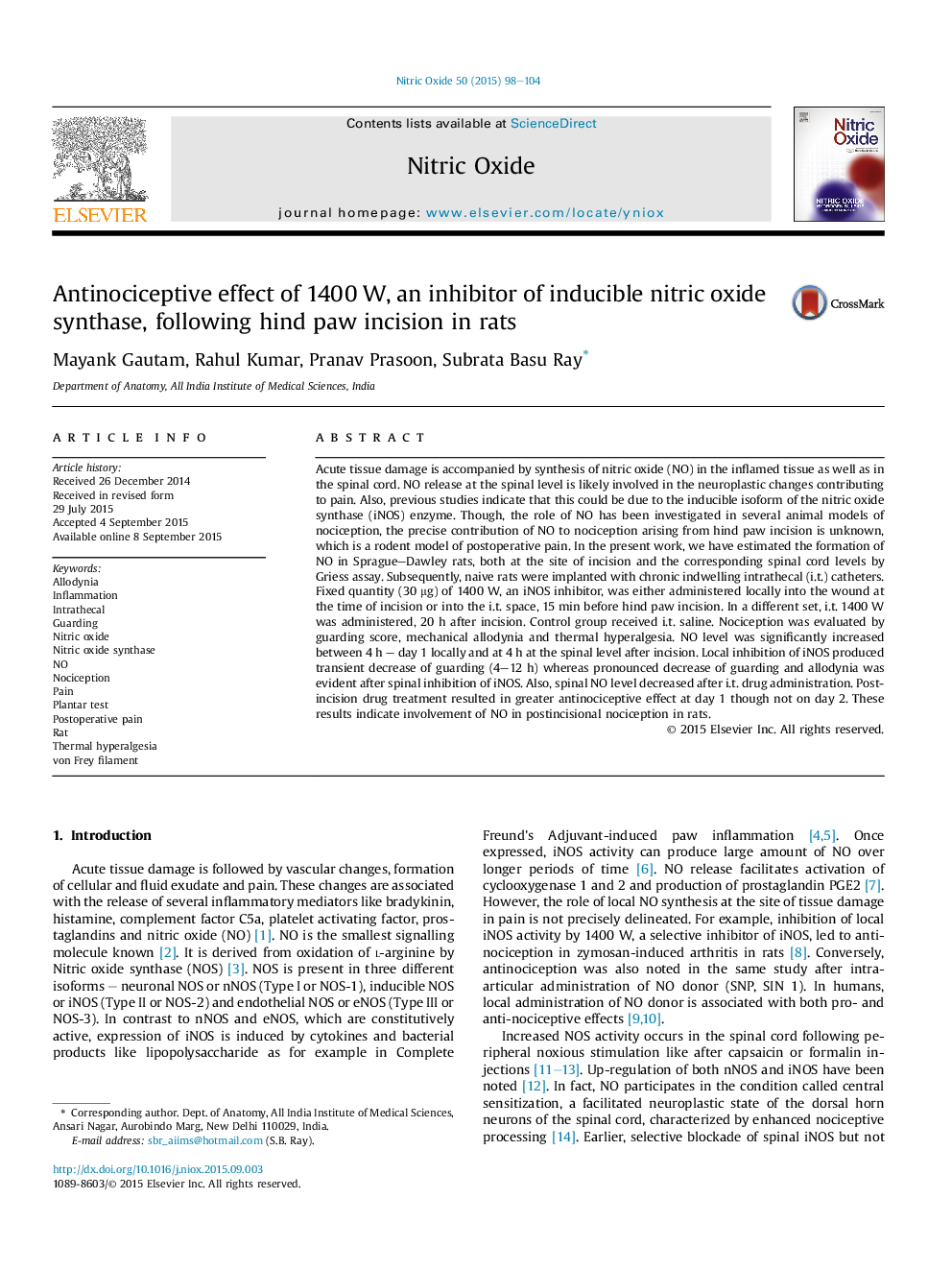| کد مقاله | کد نشریه | سال انتشار | مقاله انگلیسی | نسخه تمام متن |
|---|---|---|---|---|
| 2000438 | 1541609 | 2015 | 7 صفحه PDF | دانلود رایگان |

• Hind paw incision in rats was associated with increased levels of nitric oxide, both locally and in the spinal cord.
• Intrathecal administration of 1400 W, an iNOS inhibitor, attenuated guarding and allodynia. It also decreased NO level in the spinal cord.
• Immunohistochemical study revealed greater iNOS expression in the spinal cord after incision.
Acute tissue damage is accompanied by synthesis of nitric oxide (NO) in the inflamed tissue as well as in the spinal cord. NO release at the spinal level is likely involved in the neuroplastic changes contributing to pain. Also, previous studies indicate that this could be due to the inducible isoform of the nitric oxide synthase (iNOS) enzyme. Though, the role of NO has been investigated in several animal models of nociception, the precise contribution of NO to nociception arising from hind paw incision is unknown, which is a rodent model of postoperative pain. In the present work, we have estimated the formation of NO in Sprague–Dawley rats, both at the site of incision and the corresponding spinal cord levels by Griess assay. Subsequently, naive rats were implanted with chronic indwelling intrathecal (i.t.) catheters. Fixed quantity (30 μg) of 1400 W, an iNOS inhibitor, was either administered locally into the wound at the time of incision or into the i.t. space, 15 min before hind paw incision. In a different set, i.t. 1400 W was administered, 20 h after incision. Control group received i.t. saline. Nociception was evaluated by guarding score, mechanical allodynia and thermal hyperalgesia. NO level was significantly increased between 4 h – day 1 locally and at 4 h at the spinal level after incision. Local inhibition of iNOS produced transient decrease of guarding (4–12 h) whereas pronounced decrease of guarding and allodynia was evident after spinal inhibition of iNOS. Also, spinal NO level decreased after i.t. drug administration. Post-incision drug treatment resulted in greater antinociceptive effect at day 1 though not on day 2. These results indicate involvement of NO in postincisional nociception in rats.
Journal: Nitric Oxide - Volume 50, 15 November 2015, Pages 98–104